Isover Classic: thermal insulation board specifications
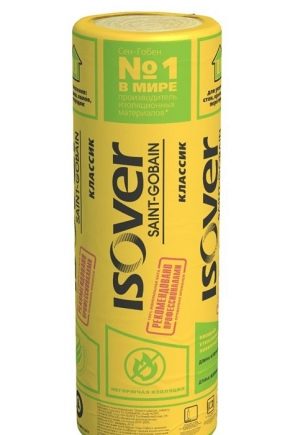
In the process of renovation or new construction, it is important to take care of the preservation of heat in the building, since it is known that about 40% of it is lost through the walls and about 30% through the roof. Mineral wool Isover "Classic" is a time-tested heat-insulating material on the Russian market for more than 20 years.
For reference: the Saint-Gobain group of companies, which produces and sells building materials, including Isover thermal insulation, as well as other innovative high-tech products for this production area, was created more than 350 years ago in France. The head office is located in Paris.
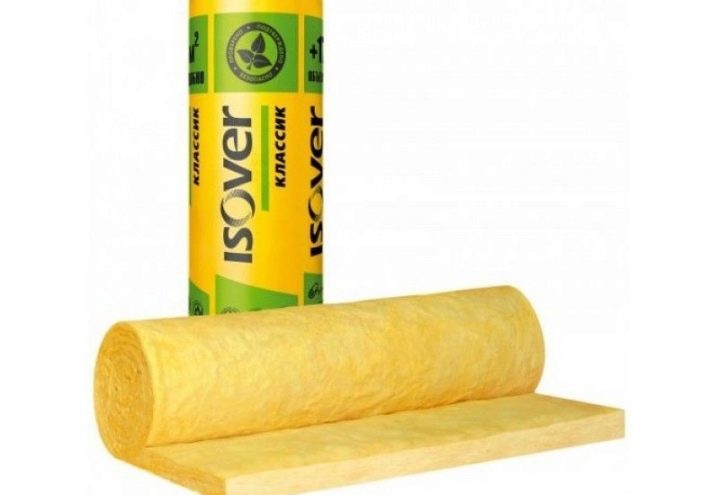
Description
The material has a fibrous structure. It is made from natural minerals: sand, limestone, soda. At a temperature of 1300 degrees, the finest glass threads, light and strong, are obtained from them, which are the basis of Isover Classic heat-insulating mats. Additional elasticity and density to the material is given by synthetic binders, which contain a relatively small amount, for example, polyurethane.
For ease of use, Isover mineral wool is available in two forms: plates and rolls. In any case, light weight, ease of installation make it easy to cope with the work, sometimes even for one person. Moreover, the material is easily cut with a construction knife with a long blade (from 15 cm).
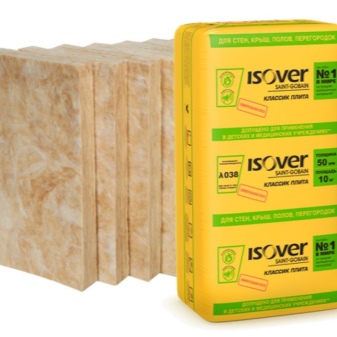
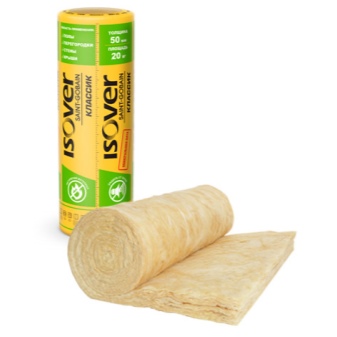
The elasticity of the cotton wool allows it, after strong compression, to expand to its original shape and size, without losing performance. Manufacturers use this property when packaging. The material, compressed 6 times by compression, is tightened with a heat-shrinkable film ("UPK" - a single package). This method saves space during transportation and storage. The “Multipack” (“MUL”) packaging is even more economical. With this method, several "UPC" are subjected to even greater compression compression. With the help of polyethylene film, they are connected into modules. Blocks of several modules, laid on a wooden pallet, are covered with stretch film.
The same property allows the installation of mineral wool with virtually no additional fasteners. The material cut with allowances, straightening after compression, tightly fills the space between the profiles or beams of the frame.
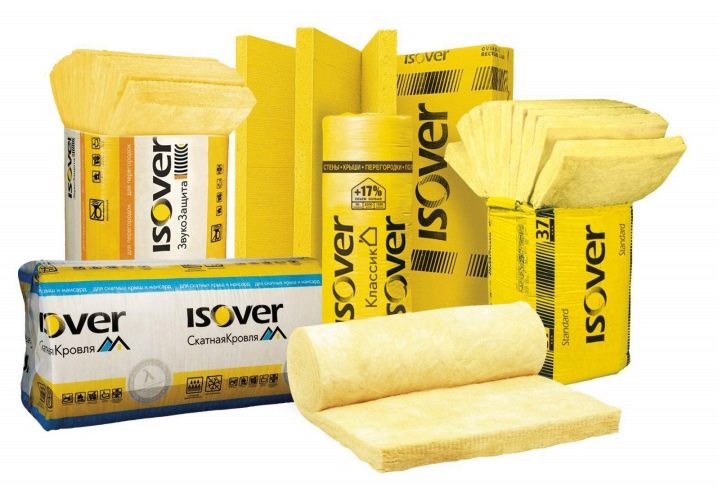
Peculiarities
To assess the thermal insulation qualities of a product, you need to know its thermal conductivity coefficient. Due to the fibrous structure, the slabs contain an air gap inside, and air, as you know, is the best heat insulator in nature (the heat transfer coefficient of air is 0.0243 W / m-K at 0 degrees C). The average thermal conductivity of Isover is 0.038 W / m-K at 10 degrees C (corresponds to GOST 31924-2011), that is, slabs and mats can rather effectively retain heat inside the house.
In addition, the material is a good sound insulator. It is noted that the greater the thickness of the interlayer, the higher the airborne sound insulation index. But an increase in density is unlikely to improve this indicator.
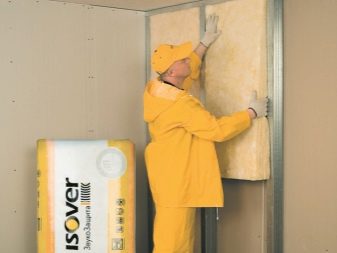
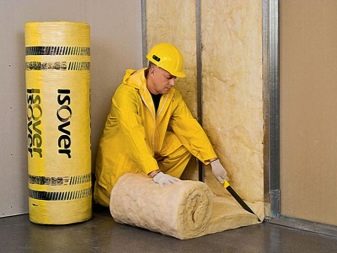
Other specifications:
- water absorption at partial immersion per day - up to 1 kg / m2;
- heat transfer at 25 degrees C - 0.041 W / m-K;
- vapor permeability - 0.55 mg / m-h-Pa;
- thermal insulation density - 15 kg / m3.
An important property that largely determines the safety of the material, its flammability.Almost the entire range of Isover heat insulators belongs to the NG group - non-combustible. Some brands that have additional vapor barrier in the form of a foil film (for example, Isover "Sauna") are classified as slightly flammable. At the same time, the self-combustion time is almost zero, the smoke generation is moderate, the coefficient does not exceed 500 m2 / kg.
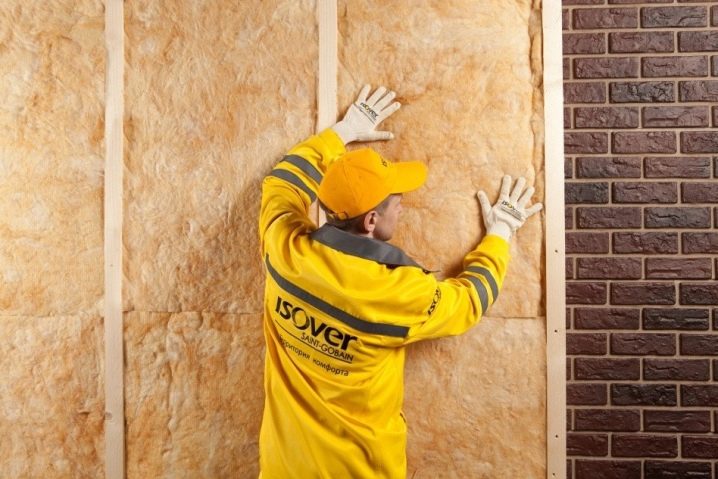
Dimensions (edit)
Isover Classic Plus slabs are produced in standard sizes: width - 610 mm, length - 1170 mm. The thickness of the Classic Plus 50 brand is 50 mm, the Plus 100 - 100 mm, respectively.
The width of roll stamps, for example, Isover Classic Twin 50, is usually 1220 mm. The length of a piece of different names may differ. Thickness is most often 50 mm, but other options are possible depending on the brand.
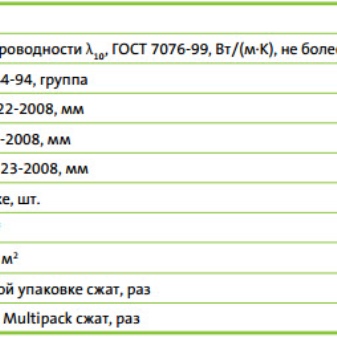
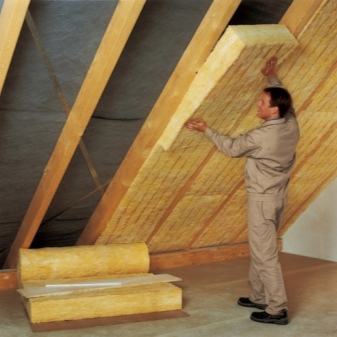
Varieties
Consider the popular Isover insulation models.

Isover "Classic Stove"
Recommended for the following designs:
- external insulation of frame walls;
- heat and sound insulation of partitions;
- insulation of suspended ceilings.
Available in two types, differing in thickness:
- "Classic Plate" -50 / E / K - 50 mm, 14 pcs. in a package, 10 m2, 0.5 m3;
- "Classic Plate" -100 / E / K - 100 mm, 7 pcs., 5 m2, 0.5 m3.
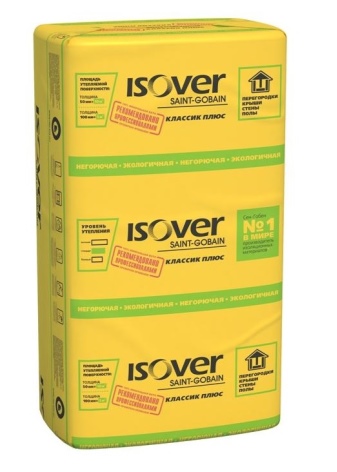
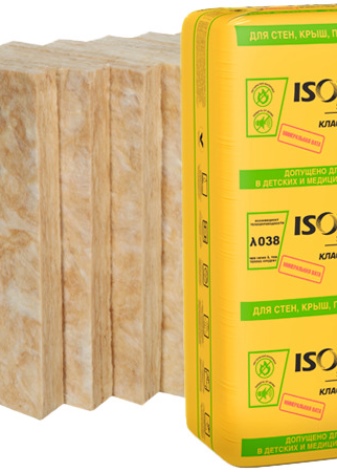
Isover "Classic Twin 50"
This is a roll-on heat insulator, so it is recommended to use it when you need to close a large surface area at once with as few seams as possible.
You can apply:
- for wall insulation outside;
- for attics and internal thermal insulation of roofs.
In a roll, as a rule, 2 pieces with a length of 8200 or 6150 mm, an area of 15 - 20 m2. Material thickness - 50 mm. There is also a brand Isover "Classic Twin Promo 80", respectively, 80 mm thick with an insulation area in a roll - 18 m2.
The technologies for the production of heat-insulating materials in the company are constantly being improved. Now there are several new items with improved characteristics, the names of which speak of their direct purpose.
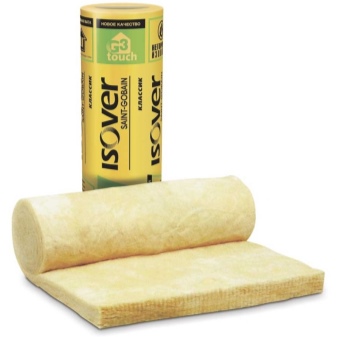
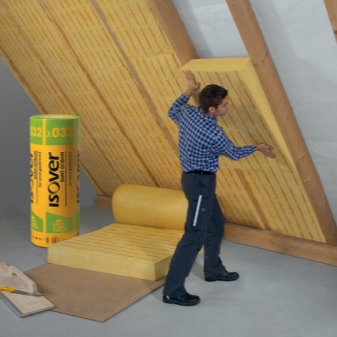
Isover "Warm House"
Recommended:
- for floors on logs;
- for floors.
Available in two types of packaging:
- 2 mats - 50 x 1220 x 5490 mm; area - 13.4 m2; volume - 0.67 m3;
- 2 mats - 50 x 1220 x 7000 mm; area - 17.1 m2; volume - 0.85 m3.
Possible use (with a thickness of 100 mm) for cladding walls. Thermal conductivity - 0.040 W / m-K. The mats are stacked in one, 100 mm thick, so when working you can choose the one you need - 50 mm or 100 mm.
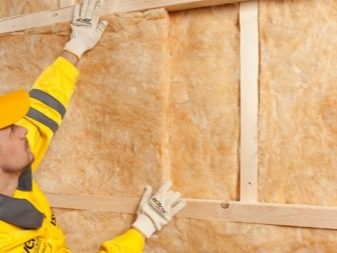
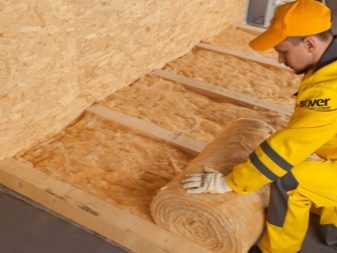
Isover "Warm Roof"
Recommended:
- for warming attics;
- for pitched roofs.
Perhaps:
- for floors on logs;
- for walls.
Two types of packaging:
- 2 mats - 50 x 1220 x 5000 mm; area - 12.2 m2; volume - 0.61 m3;
- 1 mat - 150 x 1220 x 4000 mm; area - 4.88 m2; volume - 0.75 m3.
Designed for increased moisture resistance. Thermal conductivity - 0.037 W / m-K.
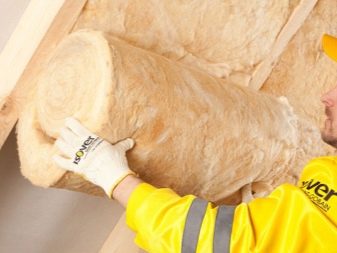

Isover "Sauna"
Recommended for thermal insulation of rooms with high humidity:
- for the floor on the logs;
- for walls;
- for ceilings (floors).
Package:
- 1 mat - 50 x 1200 x 12500 mm; area - 15.0 m2; volume - 0.75 m3.
The material is covered with a foil film to strengthen the vapor barrier. Roll material has advantages when insulating surfaces with a large area, because it is possible to close the entire area with one piece. At the same time, the probability of the formation of cold bridges is small, since there are fewer joints. It is convenient to use for rafters with a non-standard pitch, the material is easily cut, while there are few scraps left, which allows you to save money.
Thermal conductivity - 0.041 W / m-K; water absorption during partial and temporary immersion - no more than 1 kg / m2.
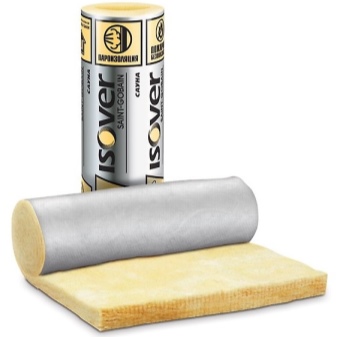
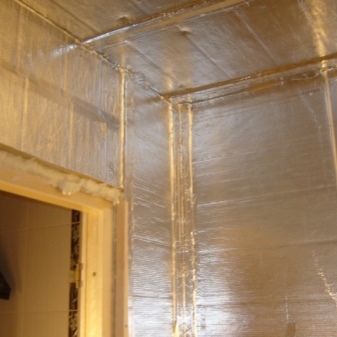
Isover "Warm House Stove"
Recommended for log floors.
With a thickness of 100 mm, it is possible:
- for external wall insulation for cladding;
- for walls from the inside;
- for frame walls.
Available in two types of packaging:
- 14 plates - 1170x610x50 mm; area - 10 m2; volume - 0.5 m3;
- 7 pcs. - 1170x610x100 mm; area - 5 m2; volume - 0.5 m3.
The material does not break, does not slip, does not require additional fasteners. Thermal conductivity - 0.038 W / m-K.


Isover "Warm Walls"
Recommended for insulation:
- external frame walls;
- walls outside for cladding: block house, lining, brick, siding and the like;
- walls from the inside.
Thermal conductivity - 0.036 W / m-K; vapor permeability - more than 0.7 mg / m-h-Pa. Two types of packaging, similar to the "Warm House" plates. Moisture resistance enhanced (Aqua Protect technology).
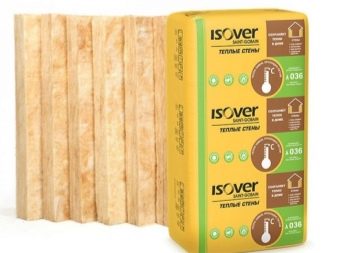
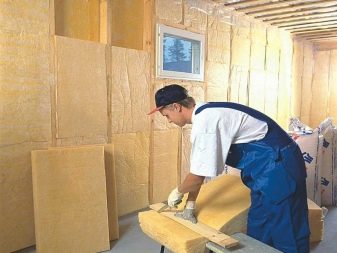
Isover "Quiet House"
Recommended for thermal and noise insulation:
- false ceilings;
- interior partitions;
- floors on logs, floors;
- walls from the inside.
Thermal conductivity - 0.038 W / m-K.With a partition thickness of 100 mm, taking into account a double layer of drywall on each side (12.5 mm), Isover "Quiet House" allows you not to hear conversations in the next room (airborne noise insulation index - 54 dB, which corresponds to GOST SP 51.13330.2011). Available in 50 mm thick, 14 pcs. packaged. When using plates, even one person can do the work, especially when insulating small rooms.
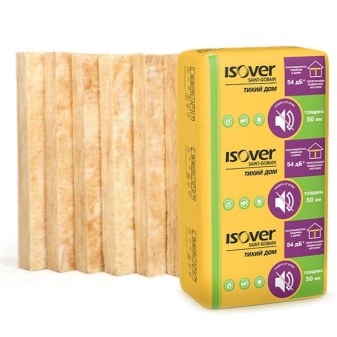
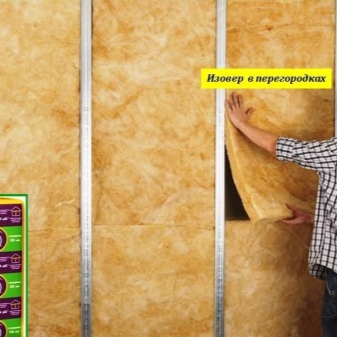
Advantages and disadvantages
We summarize all the advantages of Isover insulation:
- effectively retains heat (according to calculations, 50 cm of material can replace 95 cm of a brick wall);
- applies to any building component;
- creates good sound insulation;
- does not break during installation and use;
- due to elasticity, it fits snugly to the surface, does not slip, does not require additional fasteners;
- due to compression in the package, it takes up little space during transportation and storage;
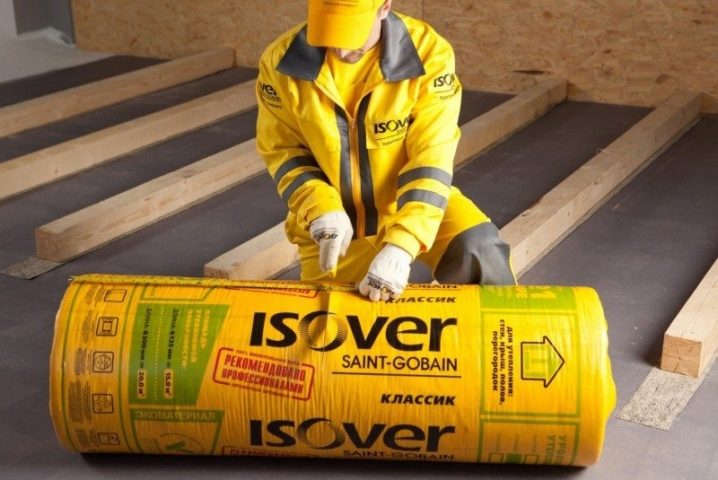
- makes it possible to save on utility costs up to 67%;
- does not emit toxic substances when heated;
- safe for health during operation;
- environmentally friendly;
- refers to non-combustible materials;
- resistant to fungus, mold and rodents.
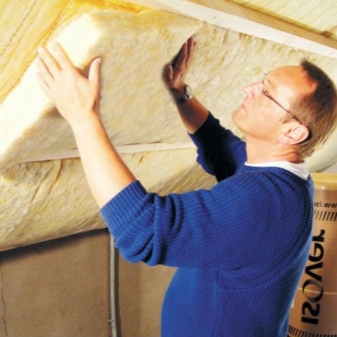
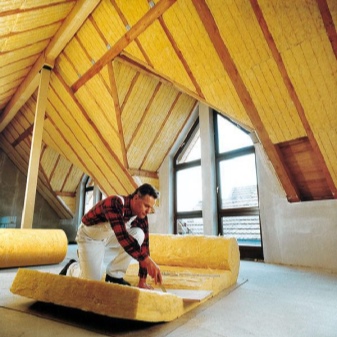
There are small disadvantages:
- Quite expensive. But given the economy of consumption and a long service life, we can say that in the end Isover does not cost much more than other heaters.
- It does not withstand high pressure, therefore it is recommended for unloaded structures.
- Care should be taken when working, since fiberglass particles can be hazardous to the skin and respiratory tract.
- We must not forget about the high hygroscopicity of the material. When the insulation absorbs moisture from the air, with good ventilation, it is able to give it back without losing its qualities. But if a large amount of water gets inside, then the material will completely lose its thermal insulation properties.
- In order for the disadvantages not to manifest themselves during operation, it is important to follow the rules of transportation, storage and installation of heat-insulating plates.
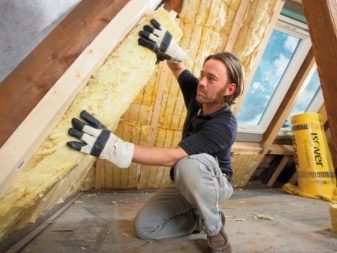
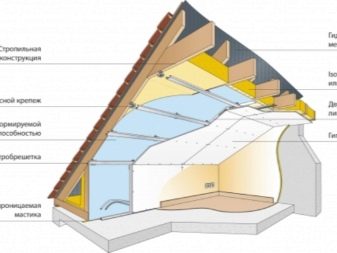
Recommendations for working with the material
First of all, you need to take care of safety measures so as not to harm your health. It is necessary to work in overalls, gloves and a respirator.
The installation process as a whole will not differ from the installation of other heaters.
- Surface preparation. As with any work, it must be cleaned.
- Installation of the frame. A vertical crate is made of 50 x 50 mm beams. The pitch is usually 600 mm. When insulating a roof, rafters serve as a frame, and logs on the floor.
- If the recommended spacing is followed, the plates fit snugly without additional fasteners. If roll material is used, for example, for a roof, it must be cut with an allowance of about 2 cm, then fastening is also not required. For reliability, you can "shoot" the staples of a construction stapler or use dowels.
- When insulating the walls from the outside, you can make another layer of thermal insulation on the horizontal lathing.
- Steam or waterproofing. Membranes from the same manufacturer can be used.
- Ventilation gap. Another crate is installed in the form of pressure bars. This is not required only for floor insulation.
- Installation of cladding, for the floor - the finishing base for final finishing.
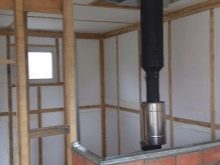

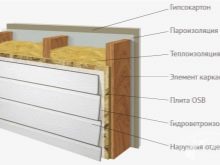
Customer Reviews
Isover "Classic" thermal insulation fully complies with the characteristics declared by the manufacturers. For the most part, the material meets the expectations of buyers. Convenience in work is noted, the ability to independently perform the entire installation, which allows you to save on calling the masters. Some dissatisfaction, for example, skin irritation after working with mineral wool, is most often associated with a violation of safety measures.
In general, we can conclude that the products of the Isover company have become widespread in private housing construction, which is deservedly so.
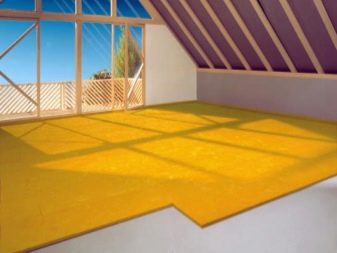

You will learn how to insulate the roof with Isover Classic in the next video.













The comment was sent successfully.